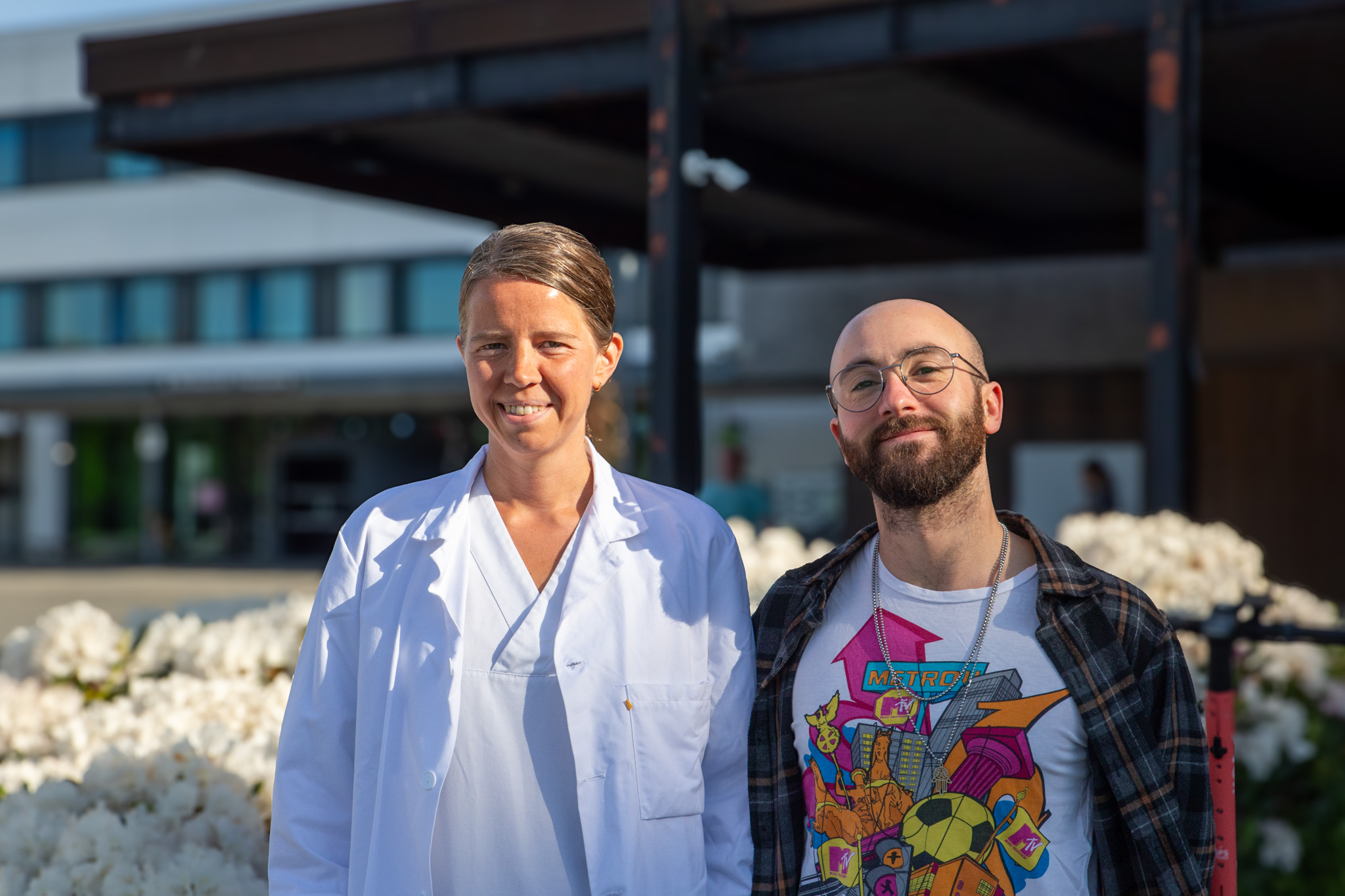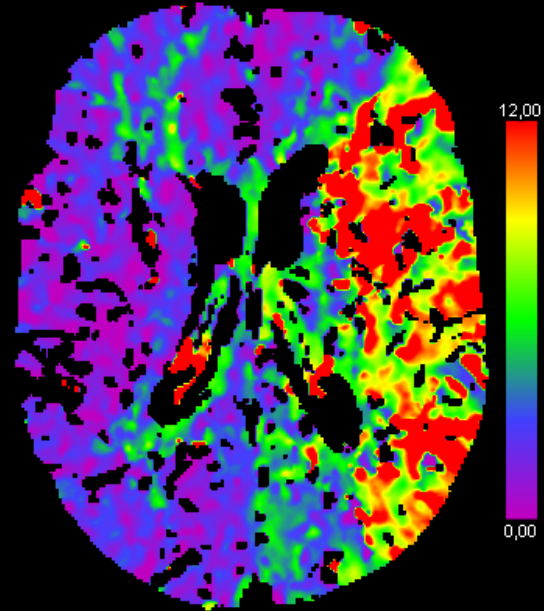She is a radiologist at Stavanger University Hospital, he is a computer scientist. Now they have teamed up to develop a tool that can help doctors make better and faster decisions when a cerebral stroke is suspected.

In her job as senior physician in radiology at Stavanger University Hospital (SUS), Liv Jorunn Høllesli has seen the importance of rapid and precise diagnosis of acute cerebral stroke.
Time is essential to save the patients. Through good diagnostic imaging, it is possible to discover exactly where the cerebral stroke is and how large parts of the brain are affected.
Is it possible to develop a tool for even more precise image diagnostics than what is available today? Can artificial intelligence be used to improve the accuracy of the images? Høllesli teamed up with Luca Tomasetti. Together, they have come up with a solution, through two doctoral projects.
"Images are taken of the brain almost immediately after the patient arrives the hospital. The images have a great influence on the choice of treatment. But we know that there are limitations to today's diagnostic imaging," says Høllesli.
Differentiate between different types of tissue
With the help of machine learning, an application of artificial intelligence, can one quickly find out exactly where the problem is? And if the patient actually has a cerebral stroke?
"A challenge in current imaging for cerebral stroke is limitations in distinguishing between brain tissue that can be saved and brain tissue that is already dead. With this as a background, we have investigated whether it is possible to increase the accuracy in the characterization of the brain tissue," says Liv Jorunn Høllesli.
Luca Tomasetti has been responsible for the technical solution for improved image diagnostics. His part of the twin project was mainly about developing new automatic methods for image diagnostics using machine learning. He has used images from a CTP scan (computed tomography perfusion - see example below) as input for an artificial intelligence network that can segment the areas of the brain with reduced blood supply. In other words, distinguish the areas of the brain that should be treated.

"Every minute millions of brain cells die during a cerebral stroke. Therefore, it is necessary to develop accurate, fast and automatic solutions to identify the location and size of the area affected by cerebral strokes," says Luca Tomasetti.
The research by Tomasetti and Høllesli shows that using images based on CT perfusion as input for artificial intelligence increases the possibility of distinguishing the stroke-affected areas.
"The results can help radiologists make better and faster decisions for patients suspected of acute stroke," says Tomasetti.
Quick decisions are needed in the healthcare system. When a patient with a possible stroke enters the hospital, both early and correct treatment is crucial for the outcome - whether the patient survives or dies.
Two projects – same data
Luca Tomasetti submitted his doctoral thesis last year. Liv Jorunn Høllesli defended her thesis on the 10th of June. It is now four years since the collaboration began. The two researchers have used the same data in the theses and have met weekly to discuss and analyse the results.
"Liv Jorunn is a radiologist, so she is an expert in the medical field. I helped her with the technical part of her project, and she helped me with the medical part of my project. We discussed articles, we discussed results, we discussed experiments. It was an active collaboration," says Tomasetti.
He says that the first step was to collect as much data as possible, images of the brains of possible stroke patients.
"We have used the same images in the studies. Although we analysed them in different ways, we had opportunities to compare the results," says Tomasetti.
Høllesli says that even if you have good data and technical expertise to develop good algorithms, that is not enough when a patient needs to be diagnosed.
"We also need medical expertise, to see that the answers are actually correct. That is what has been so exciting about the project. If we find a method that is technically perfect, it does not help if it is clinically irrelevant. People with medical and technical expertise must work side by side to develop the best methods. It is absolutely necessary," she says.
Is artificial intelligence the solution?
Is it easier for a machine to interpret the images of brain tissue than for the human eye? Will the result be more accurate?
"We have not investigated the accuracy of the diagnosis when a radiologist looks at the images compared to the machine. But we find a good match between what the machine finds and what the radiologist finds," says Høllesli.
There has been a major technological development in the healthcare system in recent years, but for now new machine learning tools are not part of clinical everyday life at the hospital. The tool the two have developed has not yet been put into use in Norwegian hospitals.
"It is a matter of money and human resources. But artificial intelligence is already part of the healthcare system. The question is how we should use the technology in a good way," she says.
She mentions Bærum sykehus as an example. Last year, they adopted an artificial intelligence application for interpreting X-ray images. When patients with suspected fractures come to the hospital, X-rays are taken. The images are processed and interpreted by artificial intelligence, and within a few minutes the answer is ready.
"It is a small revolution in diagnostics. Going from using a lot of energy and resources to interpret images, compared to using results from a machine," she says.
Tomasetti also has high expectations for the use of artificial intelligence in the healthcare system.
"Of course, there are many challenges along the way, but there is also a lot of potential. As I see it, methods within artificial intelligence are perfectly suited to the healthcare sector. But we must allow the doctor's own interpretation and explanation of the results. The doctors must still see the patient with their own eyes, but new tools will make everyday work easier," says Tomasetti.
References:
Liv Jorunn Høllesli: Stroke Mimics and In Depth Analysis of Computed Tomography Perfusion in Patients with Acute Ischemic Stroke. PhD thesis, University of Stavanger, 2024. Summary.
Luca Tomasetti: Automatic AI-Driven segmentation of Acute Ischemic Stroke Regions with CT Perfusion Images. PhD thesis, University of Stavanger, 2023. Summary.
Text and photo: Kjersti Riiber